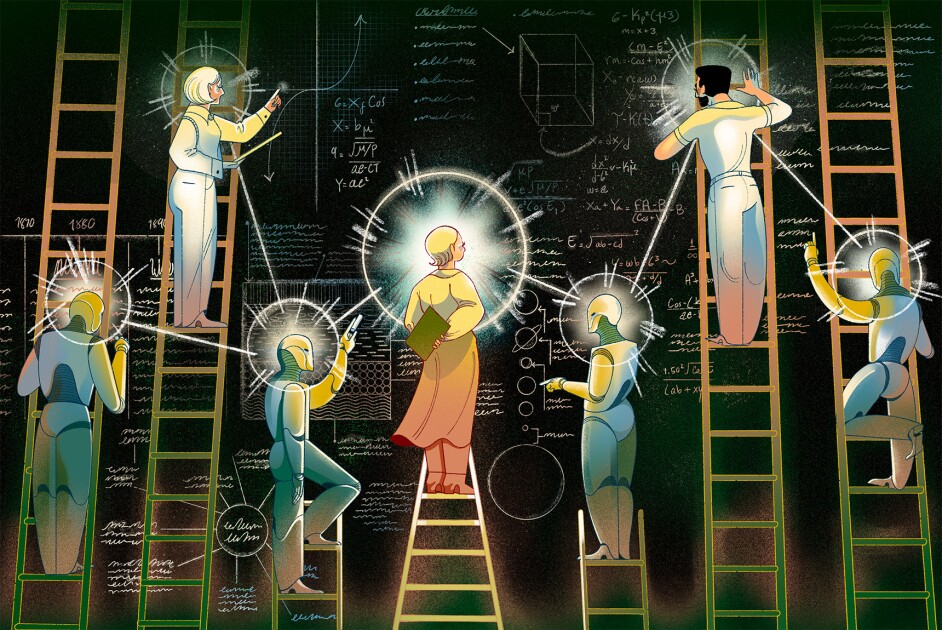AI in K-12 education stands at a complex crossroads, grappling with both potential advantages and significant challenges. As schools increasingly consider integrating artificial intelligence into curricula, the question arises: Is there a healthy middle ground where AI can enrich learning while minimizing risks? Exploring the concept of "skeptical optimism" can illuminate this path.
Understanding the Concerns
In an environment where overreliance on technology could lead to diminished human interaction, many educators voice legitimate concerns about AI systems that lack transparency, accountability, and adequate regulation. For instance, the fear is that teachers, instead of being active facilitators of learning, may become dependent on AI-generated content. This could reduce their critical role in fostering social-emotional skills and human empathy—a vital component in a student’s overall development.
A June article in Wired highlighted a growing backlash against AI, particularly among young people who fear automation will jeopardize future job opportunities. Such apprehensions manifest in reactions to AI-driven educational tools; the swift "AI-first" pivot by platforms like Duolingo met fierce resistance, indicative of a broader distrust towards AI encroachment in daily life.
The Need for Balance
As educational institutions wrestle with this duality, the question becomes whether outright resistance to AI is a productive stance. There’s a genuine risk that rejecting technology could deprive students of essential learning opportunities and skills needed in an increasingly digital workforce. On the other hand, how can schools incorporate AI while ensuring students develop the critical thinking skills necessary to navigate its pitfalls?
Kristina Peterson, an English teacher with 17 years of experience, advocates for a balanced approach. Her workshop-style classes utilize AI not as a crutch, but as a brainstorming tool within established pedagogical frameworks. By encouraging students to engage with AI-generated materials critically, Peterson helps them become discerning consumers of information. For instance, when students review AI summarizations of literary texts, they learn to spot inaccuracies, fostering an environment of skepticism and informed dialogue.
Encouraging Healthy Skepticism
Such methods underscore the necessity of teaching students to be informed skeptics regarding AI. It is essential for both students and teachers to scrutinize AI-generated content, recognizing its limitations. However, many schools currently lack adequate guidelines to facilitate exploration and experimentation with AI technologies in meaningful ways.
When districts adopt overly restrictive policies, they may inadvertently stifle curiosity and learning. The knee-jerk response from certain schools, such as the blanket ban on ChatGPT in New York City, serves as a cautionary tale. These initial setbacks led to a more nuanced understanding; many districts quickly reversed course and began exploring appropriate AI uses.
Embracing Experimentation
Educators like Rafe Steinhauer from Dartmouth College emphasize that schools must adopt a culture of experimentation regarding AI. A hesitant approach to either wholly embracing or completely rejecting AI misses essential learning opportunities. The concept of “containment” allows for controlled, meaningful engagement with AI, enabling schools to harness its potential without succumbing to its downsides.
Crucial to this framework is the differentiation between students of varying skill levels. Novice learners could become more susceptible to misleading AI information, whereas knowledgeable users could utilize AI as a tool for skilled problem-solving. Recognizing these distinctions will aid in tailoring AI applications in education.
Real-World Applications
To navigate the complexities of AI integration, real-world applications can serve as valuable teaching tools. For example, in teaching mathematics, educators like Clayton Dagler aim to tackle complex societal problems by connecting coding languages used in AI with mathematical concepts. This not only equips students with vital skills but also demonstrates how AI can serve as a tool in addressing real-world issues.
A more comprehensive approach involves teaching students in middle and high school about the social implications of AI. Initiatives like the Generative Artificial Intelligence Guidelines from the Mountain Views Supervisory Union establish a framework for responsible AI use, tailored to developmental readiness. Such guidelines help students learn to effectively interact with AI technology while being conscious of its risks and benefits.
The Bigger Picture
The integration of AI in school systems also raises larger questions. As Justin Reich from MIT highlights, the threat of "bypassing learning" is real. If students rely on AI for information retrieval without genuine engagement with course material, the essence of education may be compromised.
The stakes are high. Schools face not just the challenge of incorporating advanced technologies but also the need to develop critical thinking and discernment among students. Addressing these challenges is imperative if we hope to prepare students for a future where AI is prevalent in professional settings.
Conclusion
Navigating the intersection of AI and education requires a profound understanding of its potential benefits and risks. A "skeptical optimism" approach fosters a vision where education embraces technology while maintaining an emphasis on critical thinking, engagement, and ethical considerations.
Educational leaders must encourage experimentation and adaptation rather than retreat into outdated policies. By fostering a culture that promotes dialogue and exploration around AI, schools can prepare students for a future that demands both technological proficiency and human understanding.
In this rapidly evolving landscape, an informed, balanced stance on AI can transform educational practices, making the middle ground not just a possibility, but a reality worth striving for. The world of K-12 education must seize this pivotal moment to ensure the successful integration of AI without compromising the core tenets of learning and development.







